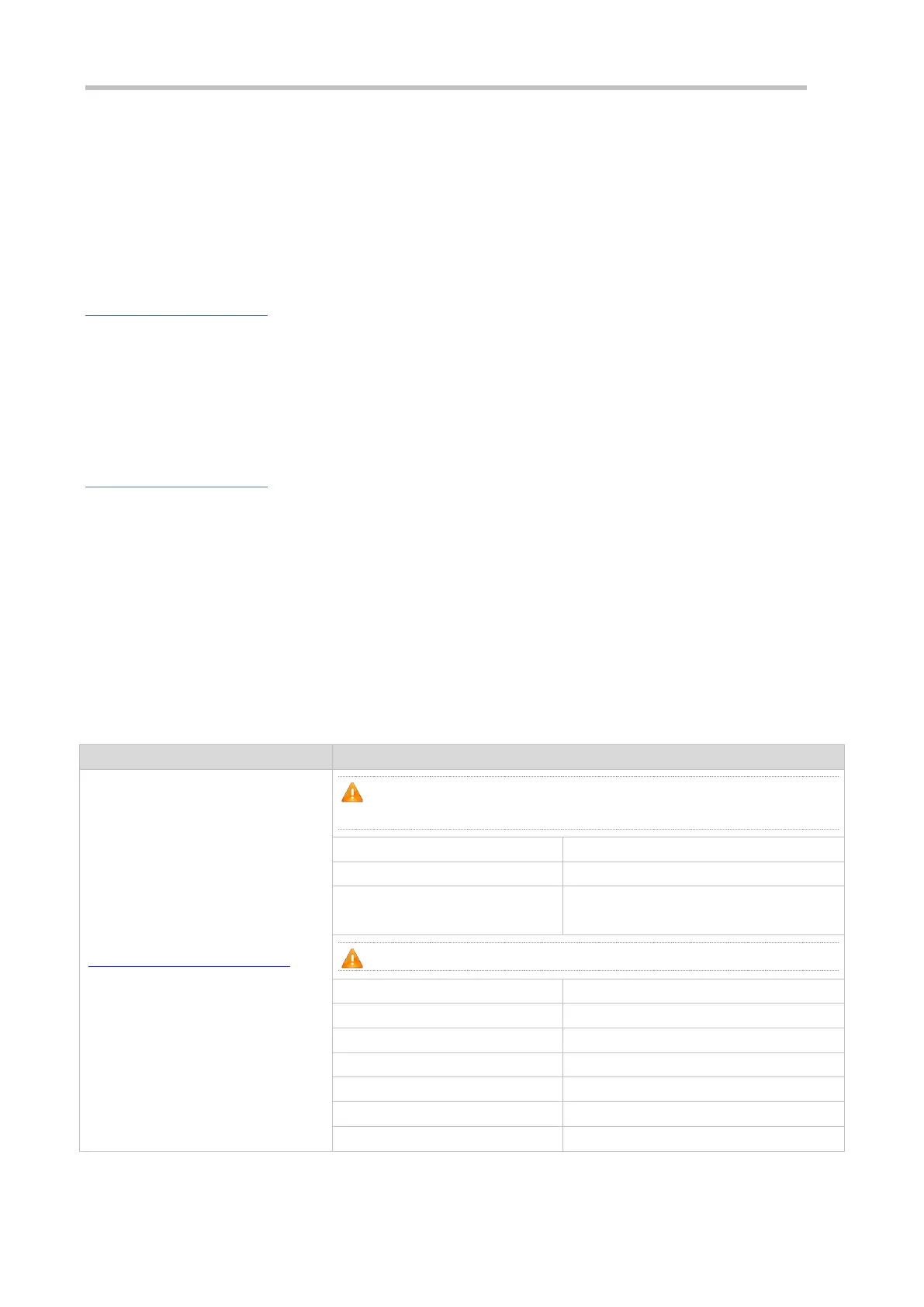Configuration Guide Configuring DHCPConfiguring DHCP
By default, DHCP Client is disabled.
In interface configuration mode, you may run the ip address dhcp command to enable DHCP Client.
You need to enable DHCP Client to enable DHCP service.
The configuration takes effect on a layer-3 interface, for example, an SVI or a routed port.
4.3.4 AM Rule
Working Principle
An AM rule defines the range of IP addresses assigned to DHCP clients in different VLANs and ports. It can be used to
quickly identify the VLAN and port of a faulty DHCP client and effectively assign addresses. After an AM rule is configured,
all DHCP clients from the set VLAN and ports may obtain IP addresses. If no AM rule is configured, there are two following
cases: If a default AM rule is configured, the client obtains an IP address from the default range; if no default AM rule is
configured, the client cannot obtain an IP address.
Related Configuration
Configuring AM Rule in Global Configuration Mode
In global configuration mode, run the address-manage command to enter AM rule configuration mode.
Run the match ip default command to configure a default AM rule.
Run the match ip command to configure an AM rule based on VLAN & port or port.
4.4 Configuration
Configuring DHCP Server
Configuring Dynamic IP Address
(Mandatory) It is used to enable DHCP Server to achieve dynamic IP
address assignment.
Configures an address pool.
Configures the network number and
subnet mask of a DHCP address pool.
(Optional) It is used to configure the properties of an address pool.
Configures a default gateway of a client.
Configures an address lease.
Configures a TFTP server address
Configures a boot file of a client.
Configures a domain name of a client.
Configures a domain name server.
Configures a NetBIOS WINS server.

